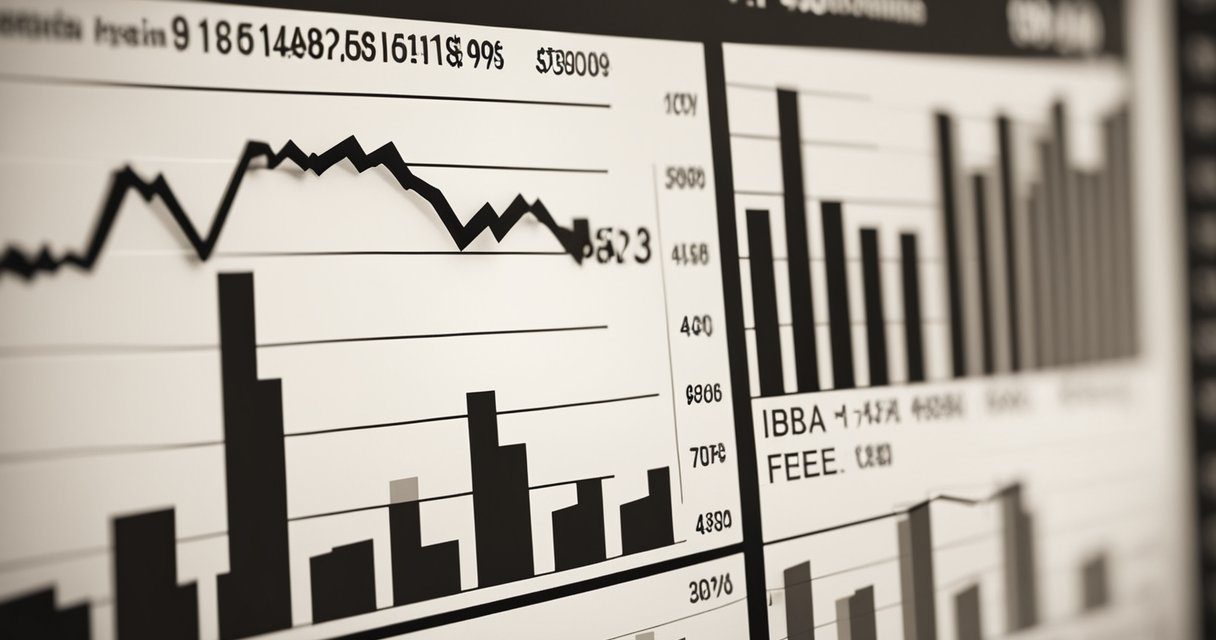Entering the world of trading can be both exciting and daunting for beginners. With the right approach, dedication, and mindset, aspiring traders can unlock their inner potential and embark on a journey toward trading mastery. It all starts with understanding why trading is viable, exploring various trading strategies that suit one’s preferences, and choosing a reliable platform from a list of recommended options.
The development of a trader’s mindset is essential for success. Building a solid trading plan, mastering market analysis, and effectively executing trades are critical skills to thrive in trading. Alongside these practical aspects, traders should use the various tools available to enhance their performance and stay updated about the latest market trends and news.
As the journey progresses, traders must cultivate a sense of professionalism and continuously refine their trading skills, enabling them to develop a successful and sustainable career in the trading world. Through trial and error, patience, and learning from experiences, one can overcome the challenges and reap the rewards of trading mastery.
Key Takeaways
- Understanding the basics of trading is fundamental to embarking on a journey toward mastery.
- Developing a solid trading plan and mastering market analysis are essential for success.
- Continuously refining skills and maintaining a professional attitude are crucial in cultivating a sustainable trading career.
Embarking on Your Trading Journey
Understanding Trading Fundamentals
Before a beginner can become a profitable trader, they must learn the basics and understand market trends. Familiarizing with concepts such as supply and demand, technical and fundamental analysis, and risk management is essential for a successful trading journey. While starting, it is vital to stay informed and follow market updates. Keeping abreast of financial news can help traders make well-informed decisions in a dynamic market environment.
Setting Trading Goals
A clear vision is crucial for achieving trading success. Aspiring traders should set realistic goals that align with their personal risk tolerance and financial situation. Goals can range from generating a specific percentage of income, growing capital, or improving overall investment performance. Moreover, traders should develop a flexible plan of action that can be revisited and adjusted as their trading journey progresses.
Choosing a Trading Style
There are various trading styles, such as day trading, swing trading, and long-term investing. Identifying the right type depends on factors like:
- Time commitment
- Desired profitability
- Risk appetite
For instance, day trading requires constant attention throughout the day, while swing trading involves holding positions over a few days to weeks. Knowing each style’s advantages and disadvantages is vital in determining which suits an individual’s lifestyle and objectives.
The Importance of Education
Continuous learning and education play a critical role in successful trading. Reading books, attending webinars, and taking online courses can enrich a trader’s knowledge base. Additionally, joining trading communities and seeking mentorship can provide valuable insights and support.
Here are some recommended resources:
- Books: Trading for a Living, Market Wizards, The Intelligent Investor
- Online courses: TechniTrader, Investopedia Academy, Warrior Trading
Opening Your First Trading Account
A beginner can open an account after acquiring sufficient knowledge and defining their goals. Different brokers offer a range of options, from commission-free trades to advanced charting tools. Comparing fees, trading platforms, and customer support can help traders find an appropriate broker that caters to their needs.
Starting with a demo account is good practice for testing the skills and strategies developed during the learning process. This allows beginners to gain hands-on experience without risking real Money. Once comfortable and confident, they can transition to a live trading account and embark on their journey towards trading mastery.
Why Trade?
Trading in financial markets can be an appealing way to grow wealth and achieve financial independence. With the accessibility of online trading account platforms and a vast array of educational resources, it has become easier for beginners to start their journey in the trading world.
Trading world key reasons why people choose to trade:
- Financial gains: For many, the primary goal is to generate profits through buying and selling financial assets such as stocks or cryptocurrencies. With a well-developed trading strategy and a clear understanding of risk management, achieving substantial returns on investment. is possible
- Flexibility: Trading offers the opportunity to work from anywhere, set your own work hours, and maintain a versatile lifestyle. Such freedom caters to those who prefer to avoid the constraints of a traditional job or business.
- Personal development: Engaging in trading requires continuous learning and adaptability. Mastering improves your decision-making, analytical abilities, and risk-management prowess, which can transition into other aspects of life.
- Independence: Successful traders can build their financial future without relying on employment. Gaining such freedom can empower individuals to pursue personal interests or entrepreneurial ambitions.
However, it is vital to note essential is not a guaranteed success. To unlock your inner trader, you must invest time and effort into learning the ins and outs of the market and honing your technical and fundamental analysis skills. Moreover, cultivating a profitable trader mindset focused on consistency and patience is essential to thrive in this competitive field.
In summary, trading offers numerous benefits and opportunities for personal growth, financial gains, flexibility, and independence. By working diligently to learn the necessary skills, techniques, and mindset, you can take confident first steps towards trading mastery and achieve your financial goals
Essential Trading Strategies for Beginners
One of the first steps in becoming a successful trader is understanding and implementing essential trading strategies. These strategies can help beginners confidently navigate the trading world while minimizing risks and maximizing profits. This section will discuss four critical trading strategies that every beginner should consider.
1. Start with a Demo Trading Account: A demo trading account is a risk-free way to start learning about trading without risking any real money. This will allow you to familiarize yourself with the trading platform, grow your knowledge, build your trading strategy, and develop the mental resilience needed when trading with real Money. Take this seriously and treat the virtual funds as you would real Money.
2. Diversification: Diversify your investments to spread the risk. This means investing in various assets, such as stocks, bonds, commodities, and cryptocurrencies, which can help protect your trading account from shocks in a specific market. By having multiple investments, beginners can potentially reduce losses and achieve relatively stable returns.
3. Setting Clear Goals and Risk Management: Before starting to trade, you should have well-defined goals, such as capital preservation or creating a steady income stream. This will help you develop a customized trading plan tailored to your risk tolerance. Use risk management tools such as stop-loss orders to protect your trading account from significant losses if the market moves against you.
4. Adopting a Trading Strategy: There are numerous trading strategies to choose from, each with its complexity and frequency. Some popular strategies for beginners include:
- Trend Following: In this strategy, traders follow the diremarket’s direction and make trades accordingly. For instance, they buy assets when the market is on an uptrend and sell them when it is on a downtrend.
- Swing Trading involves holding positions over a few days or weeks to profit from short-term price fluctuations.
- Scalping: This is a high-frequency trading strategy in which traders enter and exit trades within minutes or even seconds, aiming to profit from small price movements.
As a beginner, starting with simple, well-established strategies can be advantageous. Focus on mastering one or two techniques and trying more complex ones.
Adopting essential trading strategies is crucial for beginners to unlock their inner trader. By learning from the experiences and insights provided by demo accounts, diversifying investments, setting clear goals with risk management, and adopting effective strategies, beginners can navigate the world of trading with confidence and assurance.
List of Recommended Trading Platforms
Choosing the right trading platform is crucial for both beginner and experienced traders. Here are some of the top trading platforms that cater to various levels of expertise, investment goals, and trading styles.
E-Trade is popular among beginners due to its user-friendly interface and extensive educational resources. As mentioned by finder.com, E-Trade has been a significant player in the industry since delivering its first online trading platform for retail investors in the early 90s. With E-Trade, you can access a range of investmevarious, including stocks, options, ETFs, and mutual funds.
TD Ameritrade is known for its rich educational resources catering to different expertise levels. Users can access a vast library of articles, videos, and webcasts to improve their trading skills. Moneyzine highlights TD Ameritrade’s platform as an excellent choice for US traders, allowing them to practice with a demo account in a simulated environment before risking real estate.
Fidelity stands out as a top contender for its low-cost funds and comprehensive trading tools, according to Money. This platform offers a broad range of research tools and advanced charting capabilities, making it suitable for bothners and experienced traders.
Betterment is an ideal platform for hands-off investors, focusing on long-term growth and automated portfolio management. The platform uses a robo-advisory approach to build a diversified portfolio based on your financial goals and risk tolerance. You can start with a small initial deposit and automatically contribute to your trading account.
Vanguard is known for its low-cost mutual funds and ETFs. This platform is suitable for passive investors, as it emphasizes strategies such as buy-and-hold investing and diversification. Vanguard’s user-friendly interface and research tools help you make informed decisions in your trading journey.
Remember, it’s essential to familiarize yourself with the platform and ensure it aligns with your investment goals and trading style before opening a trading account. Each venue offers insights and tools catering to different expertise and preferences.
Developing Your Trader’s Mindset
Cultivating Discipline and Patience
Developing a trader’s mindset begins with cultivating discipline and patience. Successful traders create a sense that guides their trading strategy and helps them avoid impulsive decisions. These rules often include predetermined entry and exit points and risk management techniques. Discipline is the ability to consistently follow patience is the capacity to wait for the right market conditions to execute trades. One effective way to cultivate these qualities is by maintaining a trading journal, allowing traders to analyze their decision-making process and eliminate counterproductive habits.
Overcoming Emotional Barriers
Emotions can significantly impact a trader’s ability to make objective decisions. Common emotional barriers like fear, anger, self-doubt, hope, and anxiety can lead to poor trading results. Successful traders focus on developing self-awareness, emotional intelligence, and mental resilience to overcome these emotional barriers. Techniques like mindfulness meditation and breathing exercises can help traders reduce stress and control their emotions. Remember, emotions can be managed but must not interfere with decision-making.
Adopting a Trader’s Psychology
A key aspect of trading mastery is adopting a trader’s psychology. This involves embracing market uncertainty and recognizing that no trading strategy guarantees success. It also requires a trader to have the courage to take risks and accept losses as a part of the trading journey. By developing self-confidence and detachment from Money, traders can become more mentally prepared for the inevitable market fluctuations. A healthy trader’s mindset is dedicated, focused, and consistently striving for improvement.
The Path to Trading Mastery
The path to trading mastery is a journey of continual learning and self-improvement. Along this path, traders will encounter various challenges, requiring them to hone their skills and adapt their strategies. Some crucial steps towards trading mastery include:
- Committing to ongoing education: Successful traders continuously study market trends and learn from their own experiences and mistakes.
- Creating a solid trading plan: A well-crafted trading plan includes rules for trade execution, risk management, and exit strategies.
- Developing robust risk management strategies: Proper risk management helps to protect traders from significant losses and ensures the sustainability of their trading activities.
- Analyzing performance and refining strategies: Regularly reviewing trading performance is essential for identifying areas of improvement and fine-tuning strategies.
By focusing on aspects and practicing the abovementioned principles, leaders can unlock their inner traders and embark on the journey towards trading mastery. Although the path may be challenging, being committed, disciplined, and mentally strong will significantly increase the significance of becoming a successful trader.
Building a Solid Trading Plan
Formulating A Strategic Approach
A trading plan is a comprehensive set of rules and guidelines that outlines your approach to trading and investment decisions. A strategic approach should include specific strategies to follow and your entry and exit points for each position. Developing your personality and style is essential to become a successful trader.
Some common strategies include day trading, swing trading, and position trading. A comprehensive plan should also consider the market conditions and trends when selecting a trading style.
Risk Assessment and Management
An essential aspect of any trading plan is assessing and managing risk. Consider factors like your financial situation, lifestyle, and investment goals to determine your risk tolerance. Establish concrete risk management rules, such as using stop losses to protect your investments from sudden market downturns.
Also, consider diversifying your portfolio to help spread risk and minimize the impact of any single loss. Remember that recognizing and effectively managing the inherent risks in trading is critical for a successful trader.
Decision-Making and Behavioral Patterns
Impulsive decisions and emotional reactions can derail even the best-laid trading plans. Recognizing your patterns and learning to maintain discipline in investment decisions is critical to trading success.
Identify any tendencies toward impulsiveness or perfection in your decision-making and find ways to counteract them, ensuring adherence to the rules and guidelines outlined in your trading plan.
Monitoring and Adjusting Your Plan
No trading plan is perfect, and market conditions can change rapidly. Regularly reviewing your plan project and making necessary adjustments is crucial to successful trading. Take note of trends and market conditions, and be open to refining your strategies if they are underperforming.
Implementing a system of periodic reviews and journaling will help you stay focused on your goals and maintain a disciplined approach to trading.
In summary, building a solid trading plan involves formulating a strategic approach, assessing and managing risk, understanding personal decision-making patterns, and regularly adjusting your plan to stay on track. This foundation will help you unlock your inner trader and progress towards trading mastery.
Mastering Market Analysis
Technical Analysis Deep Dive
Mastering market analysis begins with a comprehensive understanding of technical analysis, which studies price movements to predict future market behavior. Traders use various techniques and tools, such as chart patterns, moving averages, and oscillators, to analyze historical price data and uncover possible trends. Moving averages smooth out price fluctuations by calculating the average price over a given period, while oscillators like RSI and MACD help determine overbought or oversold conditions.
Interpreting Market Indicators
A crucial aspect of market analysis is interpreting market indicators that can provide insights into price momentum and trends. Essential indicators include:
- Trend lines: These lines aid in visualizing the direction of a price movement, either upwards, downwards, or sideways.
- Moving averages: As mentioned earlier, moving averages assist in standardizing trends and potential entry and exit points.
- Volume: Analyzing trade volume can provide a sense of the market’s strengths or weaknesses and validate trends and chart patterns.
Utilizing Chart Reading Techniques
Successful traders employ various chart reading techniques to spot patterns and trends that may indicate future market movements. Some popular chart patterns include:
- Head and Shoulders: The pattern consists of three peaks, with the middle peak being the highest, signifying a potential trend reversal.
- Cup and Handle: Resembling a teacup indicates a bullish continuation pattern after a consolidation period.
- Double Top and Double Bottom: These patterns signal potential trend reversals, with the double top indicating a bearish reversal and the double bottom pointing towards a bullish reversal.
Assessing Trade Setups and Market Signals
After mastering technical analysis, interpreting indicators, and chart reading techniques, traders must evaluate trade setups and market signals. This assessment involves analyzing factoreward ratios, trade duration, and market conditions. Traders should consider timing their trade execution when:
- Trend: A strong, identifiable trend is present in the market.
- Momentum: Momentum indicators reveal optimal trade entries and exits.
- Technical levels: Technical analysis signals a potentially strong support or resistance level.
By diligently conducting market analysis and research and employing techniques like technical analysis, chart patterns, and moving averages, traders can increase their chances of success and work towards trading mastery.
Executing Trades Successfully
Mastering Entry and Exit Strategies
To achieve trading mastery, it is essential to have a clear understanding of entry and exit strategies. A well-defined trading plan helps determine the most opportune moments to enter and exit positions.
- Entry point: Look for key indicators, such as support and resistance levels, moving averages, and trendlines, to determine the best time to initiate a trade.
- Exit point: Monitor stop-loss orders and profit targets to decide when to close positions.
Position Sizing and Money Management
Position sizing and money management play a vital role in successful trading. Implementing these techniques can help mitigate risk and preserve your trading capital.
- Position sizing: Allocate a specific percentage of your portfolio to each trade based on your risk tolerance.
- Money management: Utilize tools like stop-loss orders and trailing stops to manage risk in your trading endeavors.
Identifying and Learning from Losing Trades
All traders encounter losing trades. Analyzing and learning from trading mistakes is essential to avoid repetitive errors and improve your trading skills.
- Reflect: Identify the factors that led to the loss and search for possible areas of improvement.
- Adapt: Revise your trading strategy based on the lessons learned from losing trades.
- Monitor: Track your progress and remain open to fine-tuning your approach.
The Role of Dedication in Long-Term Success
Commitment and dedication are essential components for long-term success in trading. Cultivating discipline and maintaining a consistent learning mindset enables traders to adapt to the constantly changing market conditions.
- Be proactive in staying updated on market trends and news.
- Analyze both successful and unsuccessful trades for ongoing improvement.
- Regularly review and adjust your trading strategies as necessary.
BA trader can unlock their potential and achieve trading mastery by mastering entry and exit strategies, position sizing, and money management while continually learning from losing trades and demonstrating dedication,
Tools for Enhancing Trader Performance
Essential Trading Tools and Resources
At the core of successful trading are the right tools and resources. Firstly, selecting a reliable and user-friendly trading platform is crucial for executing trades efficiently. Users should choose one that offers advanced analysis tools, real-time quotes, and customizable interfaces. Alongside a suitable venue, traders must have access to updated market data, including news sources, economic calendars, and research portals, to stay informed about the latest developments in the financial markets.
Additionally, traders should explore various strategies to determine what works best for their goals. From technical analysis to fundamental research and quantitative models, successful traders draw insights from different approaches and resources to form a well-rounded under-market understanding
Navigating Through Common Trading Mistakes.
Regardless of experience, all traders face setbacks caused by common trading mistakes. For instance, some traders risk too much capital on a single trade, hoping for substantial gains but potentially suffering massive losses. Others might fall victim to the psychological pitfalls of trading, such as making impulsive decisions based on emotions rather than sound analysis.
To avoid these mistakes, traders must cultivate discipline and implement proper risk management techniques. They should set appropriate stop-loss levels, adhere to a predefined trading plan, and maintain a balanced portfolio. Regularly reviewing and learning from past mistakes can help traders improve and enhance their performance.
Advanced Techniques and Tips for Traders
As traders gain experience, they can explore advanced techniques to refine their skills further. One approach is engaging in deliberate practice exercises, such as paper trading and backtesting, to test different trading strategies in simulated or historical market conditions. This allows traders to analyze the effectiveness of their methods without risking actual capital.
Another advanced technique is developing specialized knowledge in specific financial instruments, sectors, or market trends. An in-depth understanding can help traders recognize unique opportunities or anticipate market shifts, leading to more informed decisions and better long-term results.
Lastly, traders should consider adopting mindfulness and stress management practices like meditation or deep-breathing exercises. These can improve their psychological resilience, crucial for navigating the demanding trading world. Trader Performance explores further insights into achieving trading mastery through a combined psychology and analysis.
Cultivating a Professional Trading Career
Building a Network of Resources
One of the key aspects of establishing a successful trading career is to create a robust network of resources. This involves connecting with other pro traders, subscribing to reputable trading newsletters, and joining active online trading communities. These resources can help you stay informed about the latest market trends, investment opportunities, and trading strategies that lead to long-term success in your profession.
Continuous Learning and Skill Development
Committing to continuous learning and skill development is essential. To excel in the trading world. Begin by acquiring a solid foundation isolating concepts, risk management techniques, and market analysis. Cultivate your trading skills by attending workshops, webinars, and conferences focused on enhancing your knowledge and proficiency in trading. Additionally, consider enrolling in online trading courses to fast-track your progress and maintain a competitive edge in the financial markets.
Staying Updated with Financial Market Trends
Keeping up-to-date with the latest financial market trends is crucial for every trader, as they provide valuable insights into potential investment opportunities and risks. Stay informed by regularly monitoring trading blogs, financial news outlets, and market analysis tools like TradingView.
It is important to:
- Watch market indicators: These metrics help you gauge the current state of the market and anticipate its future direction.
- Review economic calendars: These calendars list upcoming macroeconomic events, such as earnings releases and central bank announcements, which could impact financial markets.
- Analyze geopolitical events: Stay updated on political happenings that may influence market sentiment or trigger economic changes.
In conclusion, cultivating a professional trading career requires building a solid network, consistently developing your skills, and staying informed about financial market trends. Doing so sets the foundation for lasting success in the dynamic world of trading.
Frequently Asked Questions
What are the foundational skills required to start trading effectively?
To start trading effectively, one must develop a strong understanding of market structure, technical analysis, and risk management. Additionally, being well-versed in chart reading, fundamental analysis, and various trading platforms is crucial. Patience and discipline are essential behavioral traits to cultivate to achieve consistency in trading.
Can one pursue trading as a primary source of income, and what are the risks?
Yes, trading can be pursued as a primary source of income, but it comes with substantial risks. Not everyone succeeds as a professional trader; building a consistent income stream often takes practice and learning. Market conditions, lack of discipline, and inadequate risk management can result in significant losses. It’s essential to have a backup plan and not rely solely on trading as a primary source of income, especially during the initial stages.
What are the characteristics of successful traders?
Successful traders often exhibit a deep understanding of market behavior, strong analytical abilities, discipline, and emotional control. They can adapt to changing market conditions and implement sound risk management strategies. Additionally, they have patience, perseverance, and a willingness to learn and improve their skills continually. Educational resources are most recommended for beginner traders.
Beginner traders should access various educational resources to build a comprehensive knowledge base. This may include reading books, attending seminars, joining online courses such as the 3-Day Accelerator Trading Program, and following reputable trading mentors and analysts. Online forums, podcasts, and YouTube channels are also valuable platforms for learning trading concepts and strategies.
How important is a trading mentor, and how can I find one?
A trading mentor can be extrhighlyeficial in guiding beginners through the initial stages of their journey. They can provide valuable insights, share their experiences, and help develop a personalized trading plan. To find a mentor, attend trading events, network with other traders, or join online trading communities. Emphasize quality and credibility while selecting a mentor, as not all can genuinely aid your growth as a trader.
What strategies should a novice trader focus on to minimize losses?
To minimize losses, novice traders should focus on developing a solid trading plan, incorporating risk management strategies, and sticking to their plan consistently. Additionally, they could opt for time-tested trading approaches such as the Inner Circle Trader (ICT) Trading Strategy, which focuses on analyzing market structure and institutional trader actions. Moreover, improving emotional control, practicing self-discipline, and continually learning from mistakes will equip a trader to better manage risks in the market.
Conclusion
This comprehensive guide gives aspiring traders the essential tools to unlock their inner trader and start their journey toward trading mastery. By focusing on three significant components: education, trading psychology, and creating a personalized trading plan, traders can develop a solid foundation for market success.
The path to trading mastery begins with acquiring knowledge. Understanding the workings of financial instruments, investment strategies, and risk management techniques is crucial. Continuously learning and staying updated in the dynamic environment ensures informed decisions, leading to better outcomes.
Next, mastering one’s trading psychology can’t be underestimated. As mentioned in the 7-step guide, managing emotions is essential to success in trading. Developing resilience and discipline while adapting to ever-changing market conditions will contribute to a trader’s growth and consistency in the long run.
Finally, a personalized trading plan should be drafted to define one’s unique trading style and objectives. This plan will serve as a roadmap for navigating the markets, helping traders maintain focus and clarity in the face of uncertainty.
By implementing the critical principles outlined in this guide and leveraging the acquired knowledge, aspiring traders can confidently take their first steps towards trading mastery and unlock their true potential in the financial markets.









Recent Comments